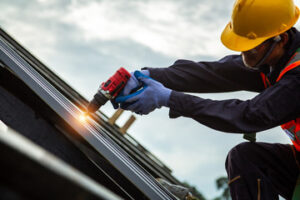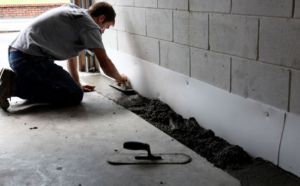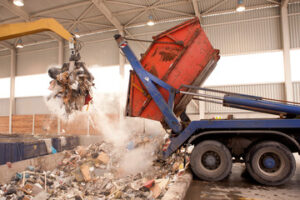Local SEO helps businesses reach a targeted audience in the areas they serve. This is done through strategies like localized keyword optimization, creating localized content, and managing online reviews.

Optimizing for voice search is a growing component of local SEO. This involves using long-tail keywords and natural language searches that mimic how people speak. Get More Info by reading the article below.
Local Keywords
Local keywords are the search terms that identify the products or services your business offers in a specific geographic area. Using them effectively is essential to maximizing your local visibility and attracting the traffic you need to grow your online presence.
When conducting your research, consider both explicit and implicit local keywords. Explicit local keywords are those that mention your business’s location or service area, such as “best bakery” or “custom cakes.” Implicit local keywords don’t mention a particular location but are relevant to local audiences, such as “best coffee shop,” “flower shops near me,” or “bakeries in Capitol Hill Seattle.”
Brainstorming initial keyword ideas is the first step in local SEO research. Start by thinking about what your customers would type into a search engine to find the goods or services you provide. Then, add to that list by brainstorming modifiers that might be associated with those terms. For example, if you own a florist shop, you might include words like flower arrangements, wedding bouquets, exotic flowers, funeral wreaths, or delivery services in your search terms.
Once you’ve compiled a list of relevant keywords, analyze the competition using tools like Semrush. This will help you determine the keywords that have the greatest opportunity to attract the right audience and generate conversions.
Analyzing your competitors’ keywords is also a valuable source of inspiration and can give you clues about what kinds of local SEO strategies are working for them. For example, if you see that a competitor is ranking in the top three spots for a certain keyword, it might be worth pursuing the same strategy to outshine them.
Once you’ve identified the best keywords, incorporate them into your website content and social media posts to boost your visibility. It’s important to monitor your progress over time to ensure that your efforts are producing results. For example, Google Search Console’s (GSC) search performance report is a great tool for monitoring keyword rankings and identifying trends. Similarly, tracking tools such as AHREFs can supplement GSC reports with additional information about organic and paid traffic to your site.
Local Listings
Local listings are an important part of a business’s online visibility and help drive qualified traffic to the website. Local listings also enable search engines like Google to better understand a company’s business and serve more relevant results.
Local SEO is a great way for businesses and marketing agencies to generate more traffic and sales, but it’s essential to have a robust listing management strategy in place to achieve the best results. Managing business listings is key for getting more traffic from local searches, and the best way to do this is through claiming, verifying, and optimizing each of your business’s listing across various platforms like Google My Business (GMB), Yelp, and Facebook.
A well-maintained local listing is not only valuable to consumers, but it also helps build trust and credibility for the company’s brand. Whether it’s through sharing business hours, services offered, or even customer reviews, these are all important components to include on your local listings to give potential customers the information they need to decide whether or not to visit your business.
The main objective of any business or marketing agency is to generate leads and increase sales, and local listings are a great way to do that by increasing a company’s visibility in the local market. By optimizing local listings with the proper local long-tail keywords, brands can drive more website traffic and foot traffic to their stores.
Managing your local business listings is essential for achieving and maintaining a high local SEO ranking, and it can help improve the user experience. Having correct NAP information, which includes the name, address, and phone number of your business, is important because it ensures that your business is found by people searching for it on search engine results pages. It also prevents any confusion for searchers who may find a different business with the same name due to inconsistent or incorrect NAP information across multiple locations online.
Another way to improve your local SEO is by including keywords in your business’s description and meta title tags. This will enable your business to rank higher in the local pack and get more visibility in the results page when someone searches for a specific service or product in your area.
Local Content
Local SEO is a key aspect of an overall digital marketing strategy. It involves optimizing a website’s content, metadata, and links to rank higher in local search results. This helps attract customers and increase business in a targeted geographic area. Unlike global SEO, which focuses on keywords and pages that are relevant to a wide range of audiences, local SEO targets specific keywords that are popular amongst local consumers.
A strong local SEO strategy includes a variety of components, including a Google Business Profile, local citations, and online reviews. These factors help search engines determine whether a business is legitimate and provides a high-quality service. It is also important to make sure that all of your business information is accurate and consistent across online platforms. This includes your business name, address, phone number, and website. In addition, you should include your service area on your Google Business Profile and optimize all of your website’s pages for local searches.
By focusing on local keywords and creating quality local content, you can improve your chances of showing up in the local pack and on Google Maps listings. This can result in a significant increase in traffic to your website and increased business opportunities for your local business.
Another important aspect of local SEO is providing user-generated content (UGC) on your website and social media channels. This can help you gain the trust of your local audience and promote your business as a trusted member of the community. It can also improve your local search ranking by boosting the visibility of your website and social media profiles in the local pack.
Ultimately, local SEO is about connecting with your target market and providing them with valuable information that meets their needs. By following these expert tips for local SEO, you can build a stronger online presence and boost your business’s bottom line.
As consumer behavior continues to shift, it is crucial for local businesses to take advantage of the opportunity provided by local search. Using local SEO strategies, businesses can increase their visibility in local search and attract customers at the exact moment they are ready to buy.
Local Reviews
Reviews are a powerful tool that can have a direct impact on search engine rankings and consumer behavior. They provide valuable insights into a business’s products, services, and customer experiences and give customers confidence in making purchases. Additionally, positive reviews can boost a business’s Local SEO visibility by increasing its presence in search results and driving new traffic. However, businesses must understand how reviews function as a ranking factor in order to leverage them for success.
Reviews can influence local search rankings by signaling to search engines that a business is popular and reputable in the community. They can also increase a business’s chances of appearing in Google’s Local Pack, which is the boxed area that appears at the top of search results for local queries. The Local Pack features three to four businesses and their ratings, addresses, and phone numbers. Having high-quality, relevant reviews can help businesses rank higher in the Local Pack, which can lead to increased traffic and conversions.
However, it is important to note that not all reviews are created equal. Reviews that are written by a disgruntled or a competitor may have a negative impact on a business’s search engine rankings. Therefore, it is crucial to focus on acquiring and promoting only high-quality reviews.
In addition, businesses should focus their efforts on acquiring and managing reviews on review sites that are most relevant to their industry. For example, if you own a home improvement company, you should claim your business profile on review sites like Zillow or TripAdvisor. This can also help you get more positive reviews from your happy clients.
Moreover, it is vital to respond to all reviews, whether positive or negative, to show that you care about your customers’ feedback. Thanking customers for their positive feedback can reinforce their goodwill, and addressing negative reviews promptly can demonstrate your commitment to improving your business and its offerings.
Local SEO is a complex process that requires knowledge of multiple aspects of digital marketing. It’s essential to partner with a digital marketing agency that can support you in building a strong online presence and improving your local search rankings. Contact Planet Marketing to learn more about how our local SEO services can grow your business and increase its visibility.








